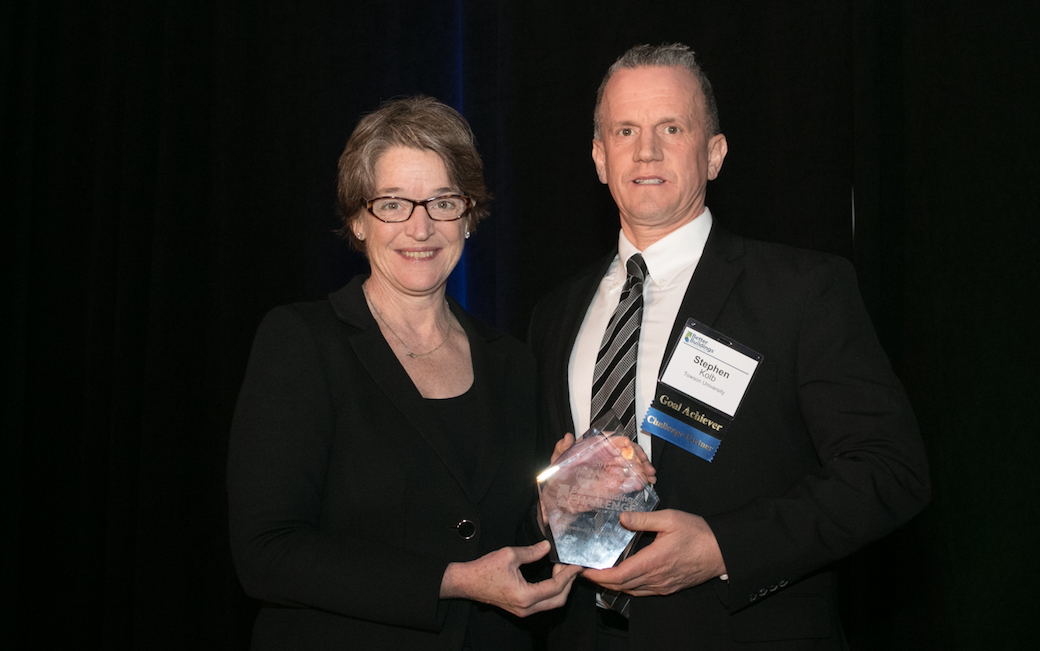TU achieves its Better Buildings Challenge energy savings goal three years early
Towson University is one of the top 10 institutions in the nation for energy savings.
By Pam Gorsuch on June 27, 2017

Towson University achieved its Better Buildings Challenge goal three years ahead of schedule, as energy consumption on campus is down 20 percent since 2010. That milestone that puts TU among the top 10 education institutions nationwide.
“This milestone puts us in an elite group of institutions that have achieved significant energy reductions,” said Towson University President Kim Schatzel. “We are proud to be at the forefront of nationwide efforts to reduce energy consumption and costs.”
Energy use is the single largest contributor to the campus’s greenhouse gas emissions and a significant expense for the university, which spends between eight and nine million dollars annually on energy costs stemming mainly from lighting, heating and air conditioning. TU joined the U.S. Department of Energy’s Better Buildings Challenge in 2013, setting a goal to reduce energy consumption 20 percent by 2020. The university officially achieved that goal this spring, becoming the third educational institution to do so. TU’s cumulative energy savings are among the top 10 educational institutions in the challenge.
The energy savings were achieved through a mix of major projects as well as many smaller improvements that resulted in incremental energy reductions year after year. One project replaced or updated nearly 35,000 light fixtures to high-efficiency and installed over 10,000 occupancy sensors to ensure lights were turned off when areas were not in use.
Another improvement included installing a comprehensive smart-metering network across the campus to allow for close monitoring of energy usage in every building. The monitoring allows facilities staff to quickly notice—and investigate—spikes in energy usage to determine if equipment needs to be fixed or energy settings need to be adjusted.
“The 20 percent energy reduction saves TU roughly $1.5 million a year in energy costs,” said TU Energy Manager Steve Kolb. “We plan to continue our efforts to reduce energy consumption and save costs for the university.”
President Schatzel reinforces campus climate commitment
In the wake of the recent federal decision to withdraw the U.S. from the Paris Climate Accord, President Schatzel joined more than 1,000 leaders across the country in committing to forge ahead on climate action. Towson University will continue to pursue its Carbon Commitment goal of achieving zero greenhouse gas emissions and mitigating the campus’s contribution to climate change.
Read the open letter signed by President Schatzel and mayors, governors, college and university leaders, businesses and investors across the country
This story is one of several related to President Kim Schatzel's priorities for Towson University: Strategic Plan Alignment.